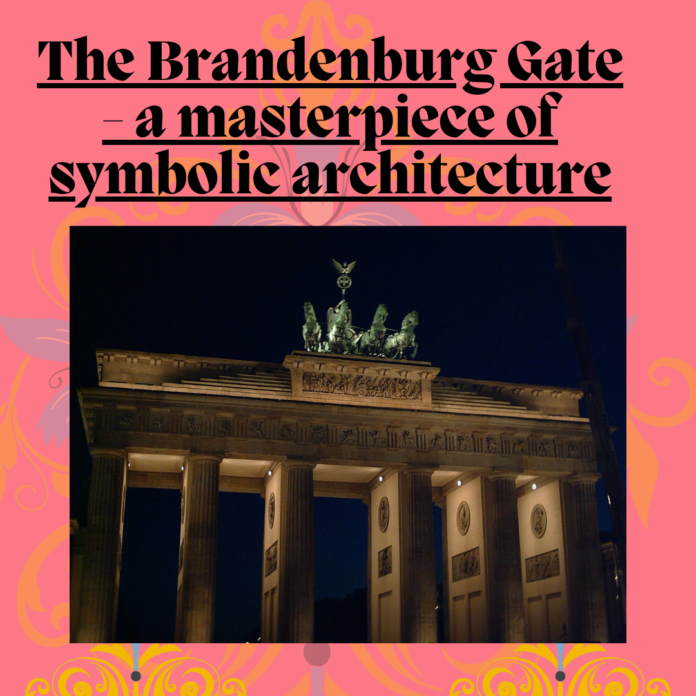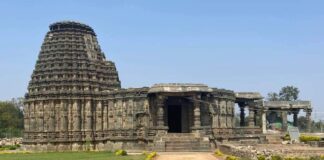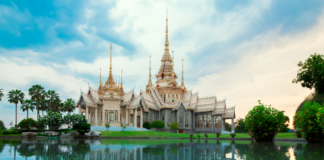There is barely an architectural work of art more representative of Germany than the Brandenburg Gate. With its five passages, two gatehouses and the majestic quadriga, it is a must-see attraction for tourists coming to Berlin. But while most people are captivated by its picturesque beauty, few know about the immense historical and symbolic importance of this architectural landmark.
Facts and figures
The Brandenburg Gate, originally known as the “Brandenburger Tor”, was issued by King Friedrich Wilhelm II of Prussia and completed in 1791. It is thus a neoclassical landmark. Formerly marking the beginning of the road from a town called Brandenburg to the city of Berlin, it is nowadays located right in the centre of Germany‘s capital city. Its construction was heavily influenced by Ancient Greek architecture and was meant to resemble various gates built to celebrate victory, such as the gateway to the Acropolis in Athens. Made out of sandstone, it fascinates with its height of about 20 metres.
Historical importance
In order to fully understand the significance of the gate, one must first take a look at its history. Ever since its completion, the Brandenburg Gate has been at the centre of many conflicts in Europe, which resulted in countless military marches having been lead through it. For example, Napoleon used the gate in the early 19th century to show off his victory and even took the quadriga to Paris with him. This at the time enormous scandal has, however, largely been overshadowed by the gate’s even more significant importance in the last century. Its symbolism of victory was massively abused by Adolf Hitler and the Nazis in 1933, after Hitler was elected chancellor of Germany and lead a procession of triumph directly through the central passage of the gate, formerly only used by royals. This was meant to send a strong signal of dominance and power across the globe. In addition to that, serious damage was done in World War II, which lead to the gate losing quite a lot of its glory. In August of 1961, following the construction of the Berlin Wall and the closing of a border control near the gate, the sight of the Brandenburg Gate became a tragic one for most Germans, as it stood directly in front of the Iron Curtain. Every glance in its direction from West Berlin also revealed the division of the whole continent and the Death Strip, where hundreds of East Germans were shot and massacred in an attempt to flee their socialist home country. Every glance from the East on the other hand, served as a reminder to the people of the freedom and dignity they longed for yet couldn’t have. In fact, this part of the Wall between West and East, capitalism and socialism, was once the second most closely guarded border in the world. While the Brandenburg Gate, given its impressive design, certainly wasn’t forgotten, it was far from the image of celebration the King of Prussia intended for it to be.
Symbol of peace and unity
Luckily, this all changed in 1989 when the Wall fell and the Iron Curtain in all of Europe was consequently torn down. On November 9th, a date that was formerly known as the Night Of Broken Glass when the horrible oppression of millions of Jews during the Holocaust found its peak, thousands of Germans, both from the West and the East, climbed on top of the Wall. Their chants of hope and freedom would fill the news in the days to come. And all this happened right in front of the Brandenburg Gate, a landmark that fell from glory to misery and was on this cloudy fall day finally elevated to the symbol of peace and unity it deserves to be; a sign that united we can overcome the past and whatever rocks life throws in our way. To this day, tourists from all over the world step over the line on the ground that marks where once was an unclimbable wall to visit the famous landmark in Berlin and get reminded of how far mankind has come in the last century. History has taught us that we are stronger together; the Brandenburg Gate is one of the few architectural masterpieces that makes you feel this with every single bone.
After recounting the ups and downs of the Brandenburg Gate‘s history, it can be said that King Friedrich Wilhelm II of Prussia surely didn’t predict the turbulent future that would await his very own triumph gate. Still, about a quarter millennium later, the landmark has achieved exactly the glorious status he always envisioned it to have. This glory, however, is not about praising a monarch, a chancellor or even a country — it is rather about celebrating all those people who fought for years and years to make the world a better place. The central passage, once reserved for only those with royal status, can nowadays be walked, wandered or wheeled through by anybody. Ultimately, the Brandenburg Gate is much more than just an architectural masterpiece. It is a sign of the strength we have already found and will always continue to find as long as we act in peaceful unity.










